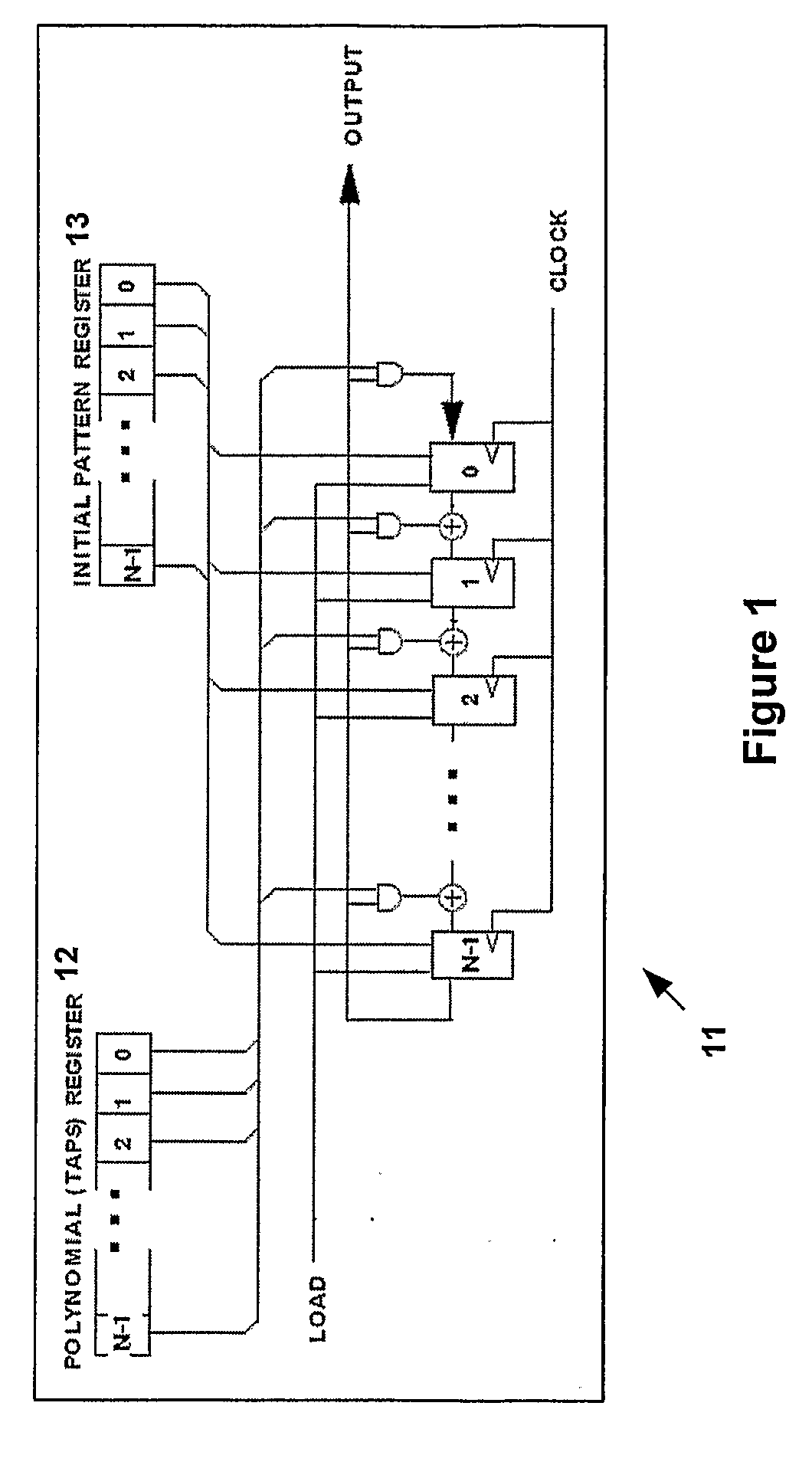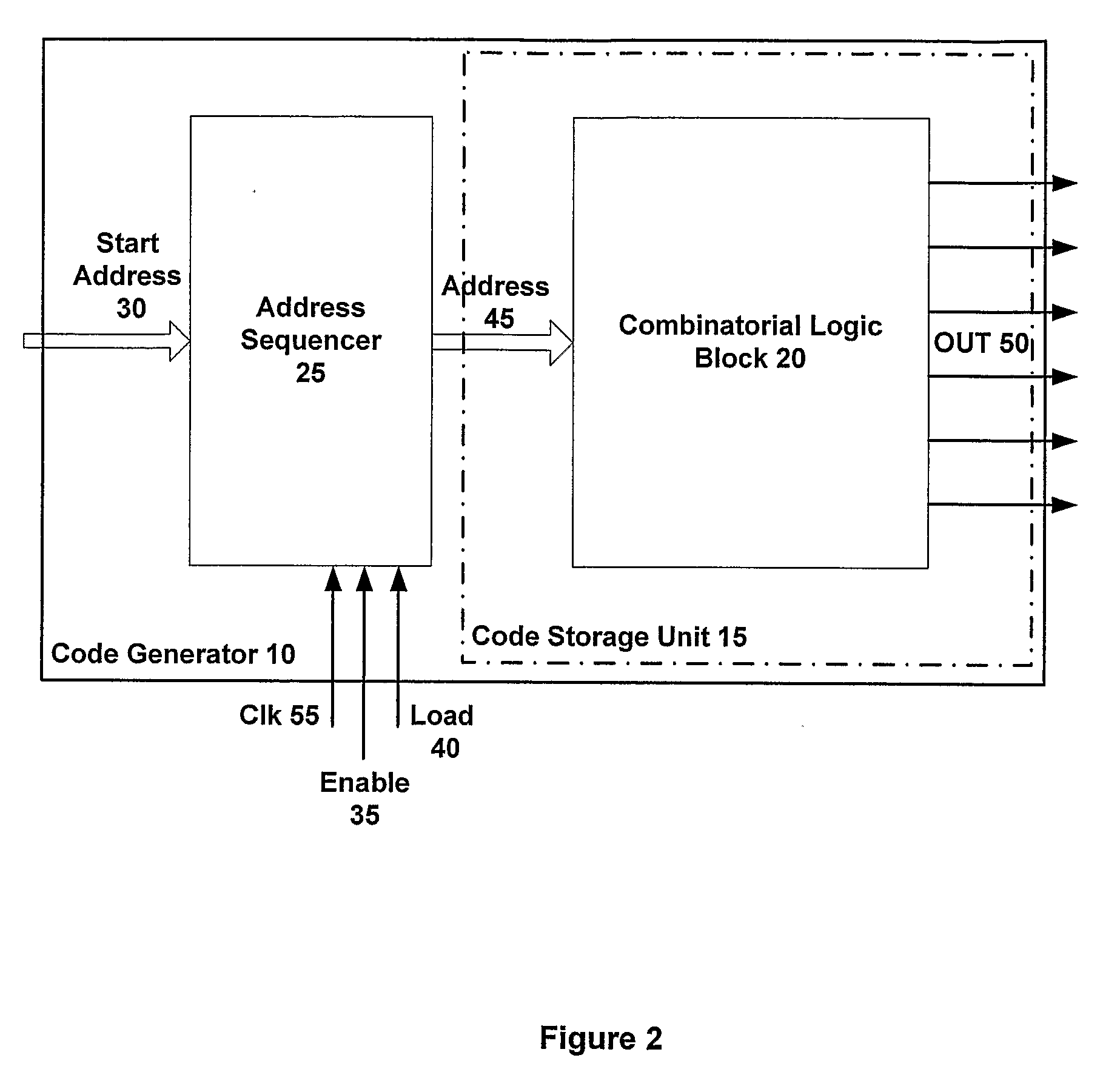Receiver and transmitter for use in a satellite navigation system
a satellite navigation and receiver technology, applied in the field of satellite navigation or positioning system, can solve the problems of limited lfsr codes of satellite navigation systems, and achieve the effect of high speed
- Summary
- Abstract
- Description
- Claims
- Application Information
AI Technical Summary
Benefits of technology
Problems solved by technology
Method used
Image
Examples
Embodiment Construction
[0041]FIG. 2 is a schematic illustration of a code generator 10 including a code storage unit 15 in accordance with one embodiment of the invention. Code generator 10 is used to store and output one or more memory codes, and therefore takes the place of a unit such as the LFSR of FIG. 1 in a conventional receiver.
[0042]Code generator 10 can be considered logically as comprising two main components, a code storage unit 15 and a sequencer 25. The code storage unit 15 comprises combinatorial logic 20, which is used to store the memory code and to provide address decoding. The sequencer 25 is used to specify the address of the desired portion of the memory code for output, by loading appropriate start addresses and incrementing current addresses. (Note that in a physical implementation, the functionality of these two components is likely to be integrated, as explained in more detail below, so that there is no clear division between the combinatorial logic and the sequencer; nevertheless...
PUM
 Login to View More
Login to View More Abstract
Description
Claims
Application Information
 Login to View More
Login to View More - Generate Ideas
- Intellectual Property
- Life Sciences
- Materials
- Tech Scout
- Unparalleled Data Quality
- Higher Quality Content
- 60% Fewer Hallucinations
Browse by: Latest US Patents, China's latest patents, Technical Efficacy Thesaurus, Application Domain, Technology Topic, Popular Technical Reports.
© 2025 PatSnap. All rights reserved.Legal|Privacy policy|Modern Slavery Act Transparency Statement|Sitemap|About US| Contact US: help@patsnap.com



